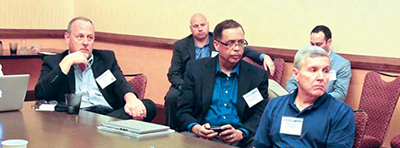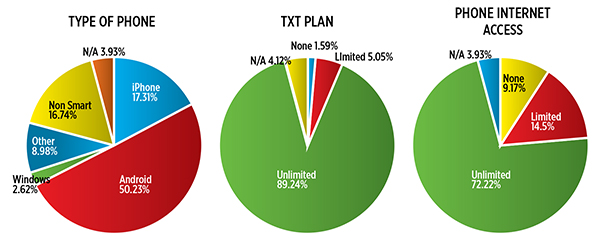Social Media

Some districts ban it (or at least try). Other districts embrace it. For the leaders assembled in the SchoolCIO working group, it seems the most successful implementations of social media use are found in those schools that recognize the importance of guiding students in their journey: teaching good digital citizenship and training students (and teachers) in the importance of establishing a positive digital identity. It’s not an easy task. One administrator had just fired a teacher for inappropriate social media behavior. Another discussed the positive relationships he’d built with his students by friending them on Facebook and chatting about informal topics like sports. Here are some highlights of our discussion.
Addressing Social Media Concerns
The first question focused on the fears administrators had encountered about the use of social media with students. Participants shared their experiences, as well as explained how they dealt with these concerns.
“We really backed into this, as the issue was there before the guidelines were in place. It caused the community and district to come together rapidly and develop guidelines. We then reached out to the folks at Edmodo and captured a domain for the district to put everyone into that walled garden, basically eliminating any issues.”
—Curt Cearley, Director, Technology Services, Fayette County Schools, GA
“The main fear is that we are creating an avenue for increased bullying. To combat this belief, we work on educating parents and students about using social media tools correctly and we monitor our sites.”
—Rick Cave, Director of Technology, West Windsor-Plainsboro RSD, NJ
“In general, the fears have been about protecting student privacy and then about use of the tools for non-academic uses. We have only had a couple of incidents and they have been addressed without any real issue.”
—Scott Graden, Superintendent, Saline Area Schools
“We’ve seen very little fear or misconceptions regarding student use of social media; however, we haven’t really adopted too many of the “public” avenues of social media.”
—Jay Smith, Innovation Architect, Hall County School District, GA
Tools and ideas to transform education. Sign up below.
Examples of Using Social Media at Cedar Hill ISD
By Kyle Berger
• Study tips Digital citizenship
• Athletics for recruiting
• Assignment reminders
• Teacher and student feedback
• General informational updates
• Collaboration After-school support
Social Media In the classroom
Student surveys from cedar hill high school

Social Media Policies
Attendees discussed how they changed their AUP s to address issues related to social media in and out of the classroom.
“We went from ‘Acceptable Use’ to ‘Appropriate Use.’ We made the agreement to use more age-appropriate and separated elementary and secondary policies and procedures. We put guidelines in place with regard to sharing information, conducted community awareness seminars to assist parents with management of social media, and ensured digital citizenship is part of lessons conducted by classroom teachers.”
—Curt Cearley
“We have re-written our AUP several times in the past few years. There is one policy for staff, and a similar but more restrictive one for students. Our current policy requires staff to have an approved plan for using social media in class. Use of our network for personal social media is not permitted.”
—Mike Jamerson, Director of Technology, Bartholomew Consolidated School Corporation, IN
“Our AUP has not changed due to social media. The use of social media has not introduced any new infractions (e.g., bullying or inappropriate behavior), it has just introduced new ways to do those things. Our AUP has always addressed the actions, not the tool used to perform them.” —Rick Cave
“A large concern is the possibility of an increase in cyberbullying. We need to do a better job of teaching digital citizenship and to create policies to adequately address infractions. Our Ed Tech Services department is leading the effort to create Responsible Use Guidelines and will be presenting them to the Board for adoption in the coming months.”
—Eric Hileman, Executive Director, IT Services, Oklahoma City Public Schools, OK
“We have renamed our policy “Responsible Use” and re-written the documents in the past few months. The emphasis is on awareness of possible issues, but also increased openness to previously closed sites. We stress that behavior with technology should not be different than with other tools or settings.”
—Kevin Schwartz, CTO, Clear Creek ISD, TX
CONSIDERATIONS WHEN EVALUATING USE OF SOCIAL MEDIA
By Doug Johnson
• Don’t block, guide.
• Educate the educators.
• Have a social networking policy and guidelines.
• Use walled garden tools—purposefully.
• Inform parents.
• Accept that the horse is out of the barn.
• Don’t be a format bigot.
Christine Weiser is the Content and Brand Director for Tech & Learning, and has been with the company since 2008. She has reported on education for most of her career, working at Scholastic and Gale Publishing before joining Tech & Learning. Christine is also an author and musician, and lives in Philadelphia with her husband and son.
